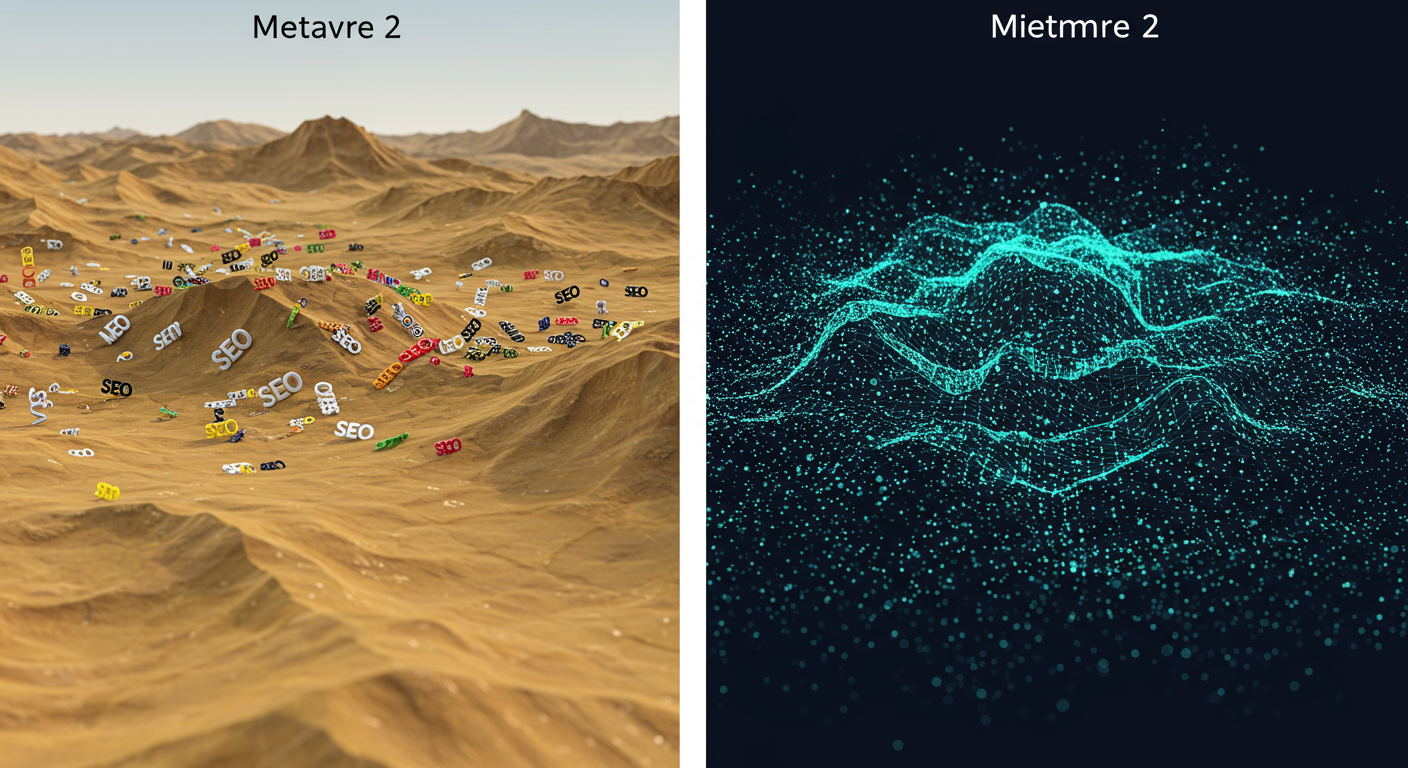Embracing the Bumps: Why the “bumpy, SEO, keywords” Philosophy is the New Lifestyle for Digital Success
John: Welcome, everyone, to a topic that’s been bubbling under the surface of the digital creator economy for a while now. We’re not talking about a new app or a platform, but a mindset, a philosophy for navigating the modern internet. We’re calling it the “bumpy, SEO, keywords” lifestyle. It’s about acknowledging that the path to visibility and success online isn’t a smooth, straight highway. It’s a challenging, data-driven, and often bumpy road, but one that’s ultimately more sustainable and rewarding.
Lila: Okay, John, I have to jump in right away. “Bumpy, SEO, keywords lifestyle” sounds a bit like a jumble of marketing terms. For our readers who are just starting out, maybe as bloggers or small business owners, what does that actually mean? Are we talking about embracing failure? Or is it more specific than that?
John: That’s a great question, Lila, and it gets to the heart of it. It’s less about embracing failure and more about embracing the process. The “bumpy” part refers to the reality of analytics. Your traffic will have peaks and valleys. An article you love might not perform well, while a quick post takes off unexpectedly. It’s about not getting discouraged by these fluctuations. Instead, you use the other two pillars—SEO (Search Engine Optimization) and keywords—as your map and compass to navigate that bumpy terrain intelligently.
Lila: So it’s a strategic way of looking at the chaos? Instead of just feeling like you’re on a roller coaster, you’re actively trying to understand the track. I like that. It feels more empowering.

Basic Info: Defining the Three Pillars
John: Precisely. Let’s break down those pillars. The “bumpy” philosophy is the foundation. It’s the acceptance that growth is non-linear. One month you might see 30% growth, the next it could be flat, or even dip. This is normal. Algorithm updates happen. Trends shift. Competitors publish great content. The lifestyle is about emotional resilience and detaching your self-worth from these short-term metrics.
Lila: That’s a huge point. I see so many new creators get completely demoralized when a video flops or their site traffic dips for a week. They think they’ve done something wrong, but you’re saying it’s just part of the landscape?
John: It is. And that’s where the second pillar, SEO, comes in. SEO, or Search Engine Optimization, is the broad set of practices aimed at improving your visibility in search engines like Google. Think of it as your vehicle for the bumpy road. A well-optimized site is like a sturdy 4×4; it can handle the rough patches better. This includes technical aspects like site speed, mobile-friendliness, and a logical site structure. It’s the technical framework that ensures your content has a chance to be seen.
Lila: And the third pillar, keywords, that’s the fuel for the vehicle, right? It’s what you’re actually creating content about.
John: Exactly. Keywords are the specific words and phrases people are typing into search engines. They are the language of your audience. Deeply understanding keywords isn’t just about stuffing them into an article. It’s about understanding user intent (what someone is *really* looking for when they search). Are they trying to buy something, learn something, or find a specific website? Your keywords guide your content strategy, ensuring that you’re creating things people are actively searching for. They are your direct connection to your audience’s needs.
Supply Details: What You Need to Live the Lifestyle
Lila: Okay, this is starting to make a lot of sense as a cohesive strategy. If someone wants to adopt this “bumpy, SEO, keywords” lifestyle, what do they need? Is there a starter pack?
John: I’d frame it as a toolkit, both in terms of mindset and actual tools. Mentally, the key “supplies” are:
- Patience: SEO is a marathon, not a sprint. Results can take months, not days.
- Curiosity: You need a genuine desire to understand your audience and what makes them tick.
- Analytical Mindset: A willingness to look at data, not as a judgment, but as feedback.
- Resilience: The ability to see a “bump” or a dip in traffic not as a failure, but as a learning opportunity.
Lila: Those are the soft skills. What about the hard tools? For someone on a budget, what are the absolute essentials?
John: That’s where it gets practical. You don’t need to spend a fortune. Here’s a basic toolkit:
- A reliable analytics platform: Google Analytics is free and the industry standard. This is how you watch and understand the “bumpy” road.
- A keyword research tool: There are powerful paid options like Ahrefs or Semrush, but you can start with free tools like Google Keyword Planner or even just Google’s own search results with its “People also ask” and “Related searches” sections.
- A solid content management system (CMS): Something like WordPress is fantastic because it has a huge community and countless plugins to help with SEO.
- An AI writing assistant (optional but helpful): Tools like Jasper or Writesonic can help with brainstorming and overcoming writer’s block, but they are aids, not replacements for genuine expertise and a human touch. They can help smooth out some of the smaller bumps in the content creation process.
Lila: It’s good to know the barrier to entry isn’t necessarily a high-cost one. The real investment seems to be time and the willingness to learn.
Technical Mechanism: How It Works in a Cycle
John: Yes, and the process itself is a continuous cycle. The “technical mechanism” of the lifestyle isn’t a one-time setup; it’s an ongoing loop. It looks something like this:
- Research: You start with keywords. You identify topics your audience cares about and that you have expertise in. You look at the competition and find a unique angle.
- Create: You produce high-quality, genuinely helpful content based on that research, optimized for SEO best practices (clear headings, good meta descriptions, relevant internal links).
- Publish & Promote: You publish the content and share it through your channels.
- Analyze: This is the crucial “bumpy” step. You wait. You watch the analytics. Does the page get traffic? What keywords is it ranking for? How long do people stay on the page? This is where you’ll see the peaks and valleys.
- Iterate: Based on the data, you improve. You might update the article with new information, improve the title, or realize you need to create supporting content. This iteration is what turns those bumps into a gradual upward trend.
Lila: Could you give a real-world example? Say I have a blog about sustainable gardening.
John: Of course. Let’s say you do your research and find the keyword “how to make compost at home” is very popular. You write the most comprehensive guide on the internet about it. You publish it. For the first month, nothing—a real bump. It’s buried on page 10 of Google. But you don’t give up. You look at the data and notice you’re getting a few clicks for a more specific term: “best kitchen compost bin for small apartments.” You realize your guide is too broad. So, you iterate. You create a new, dedicated article specifically on that topic, and you link to it from your main guide. A few weeks later, that new article starts climbing the ranks, bringing in targeted traffic. You’ve navigated a “bump” using keyword data and created a successful piece of content.

Team & Community: You’re Not Alone on the Road
Lila: That makes it so much clearer. It’s a very active, not passive, process. But it also sounds like it could be a bit lonely, just you versus the analytics charts. Is there a community aspect to this lifestyle?
John: Absolutely. And it’s one of the most important parts. The journey might be personal, but it’s not solitary. The “bumpy, SEO, keywords” community is vast and incredibly supportive. It exists in places like:
- Online Forums: Subreddits like r/SEO or r/bigseo are filled with professionals sharing wins, losses, and analysis of Google’s latest moves.
- Private Groups: Facebook groups and Slack or Discord communities dedicated to niche blogging, content marketing, or specific SEO tools are invaluable. People share case studies of their own bumpy rides.
- Industry Blogs & Newsletters: Following resources from places like Search Engine Journal, Moz, or Ahrefs’ blog keeps you connected to the broader conversation.
- Masterminds: Many creators form small, private groups—masterminds—to hold each other accountable, share data confidentially, and brainstorm strategies together.
Lila: So if you hit a particularly bad “bump,” like a massive traffic drop after a Google update, these communities are where you’d go to figure out what happened?
John: Exactly. You’ll find thousands of others experiencing the same thing. They’ll be dissecting the update, sharing what they’re seeing in their data, and collectively figuring out the path forward. It turns a moment of panic into a collaborative problem-solving exercise. Community is the shock absorber for the bumpiest parts of the road.
Use-Cases & Future Outlook: Who Is This For?
Lila: Who benefits most from adopting this mindset? Is it just for full-time bloggers and marketers?
John: Not at all. It’s a versatile philosophy.
- Small Business Owners: A local bakery owner in Kansas City can use it to rank for “best birthday cakes in KC,” navigating the bumpy road of local SEO to get real customers.
- Startup Founders: Startups often have a bumpy path to finding product-market fit. Using a keyword-driven content strategy can be a cost-effective way to attract early adopters and learn what they need.
- Freelancers & Coaches: An SEO coach or a freelance writer can build their entire personal brand by creating content that demonstrates their expertise and attracts clients.
- Hobbyists: Even someone with a passion project, like a blog about vintage sci-fi, can use this lifestyle to find a dedicated audience and share their passion more widely.
Lila: And what about the future? With AI and tools like Google’s Search Generative Experience (SGE) changing search, is this lifestyle still relevant? Does AI make the road smoother or just different?
John: That’s the billion-dollar question. I believe it makes the philosophy *more* critical than ever. AI is another “bump” in the road—a big one. It’s changing how content is created and surfaced. Some believe “AI has killed SEO.” I disagree. It has killed lazy, low-quality SEO. The future will favor those who can use AI as a tool but still focus on genuine expertise, unique perspectives, and a deep understanding of user needs, which are discovered through keyword research. The road is getting bumpier and more complex, so having a resilient, data-informed philosophy is the only way to stay on course.

Competitor Comparison: Different Paths to Growth
Lila: When people look for ways to grow online, they see a lot of different advice. How does the “bumpy, SEO, keywords” lifestyle compare to other, maybe more common, approaches?
John: It stands in stark contrast to a few popular but flawed models. Let’s compare it to two “competitors”:
- The “Viral Lottery” Approach: This is the mindset of just creating content and hoping something goes viral on TikTok or Instagram. It can work, but it’s unpredictable and often leads to fleeting fame rather than a sustainable business. The “bumpy” lifestyle, in contrast, isn’t about lottery tickets; it’s about building a solid foundation that generates consistent, predictable traffic over time.
- The “Black-Hat” Shortcut Approach: This involves using deceptive techniques to try and trick search engines. It might produce a quick, massive spike in traffic, but it’s incredibly risky. When Google catches on—and they always do—your site can be penalized and disappear from search results overnight. The “bumpy” road is slower, but it’s the ethical, sustainable path that builds real trust with both search engines and your audience.
Lila: So it’s the classic tortoise versus the hare story. The other methods are hares that might sprint ahead and then crash, while this is the slow and steady tortoise that ultimately wins the race.
John: A perfect analogy. The journey is bumpy, but the destination is far more secure.
Risks & Cautions: Navigating the Pitfalls
Lila: You make it sound very appealing, but what are the risks? What should people be cautious about when they decide to live this lifestyle?
John: It’s not without its challenges. The primary risks are psychological.
- Burnout: Constantly analyzing data and iterating on content can be exhausting. It’s crucial to set boundaries, celebrate small wins, and remember that it’s okay to take breaks.
- Analysis Paralysis: With so much data available, it’s easy to get stuck analyzing and never get around to creating. The goal is to find actionable insights, not to track every metric to the hundredth decimal place.
- Chasing Algorithms: A big risk is becoming obsessed with every minor Google update. The core principles of creating high-quality content for humans rarely change. It’s better to focus on the fundamentals than to frantically change your strategy every month.
- Impatience: The biggest risk of all is giving up too soon. The initial part of the journey is often the bumpiest, with the fewest rewards. Pushing through that initial phase is the hardest part.
Lila: How do you avoid that burnout? Any practical tips for someone who’s feeling overwhelmed by the bumps?
John: Step away from the analytics. Seriously. Set specific times to check your data, maybe once a week. The rest of the time, focus on the parts you enjoy, whether that’s writing, recording, or interacting with your community. And remember the “why.” Why did you start this project? Reconnecting with your core passion is the best antidote to burnout.
Expert Opinions / Analyses
John: We’re not the only ones talking about this. While they may not use the “bumpy, SEO, keywords” label, the core philosophy is echoed by leaders in the field. For instance, Rand Fishkin, founder of SparkToro, often talks about the “long, slow slog” of marketing and the importance of playing the long game over chasing short-term hacks.
Lila: And what about the data experts?
John: Analysts at major SEO tool companies consistently publish case studies showing that traffic growth is almost never a straight line. They show charts filled with seasonal dips, algorithm-related drops, and then recoveries and new growth. They emphasize that the most successful sites are the ones that don’t panic; they diagnose the issue, adjust their strategy, and keep publishing. Their data validates the “bumpy” philosophy every day. They show that the thorny and bumpy path, when navigated with good data, leads to a stronger, more resilient online presence.
Latest News & Roadmap: What’s on the Horizon?
Lila: Looking ahead, what are the next big “bumps” or trends we should be watching? What’s the roadmap for someone living this lifestyle in the next year or two?
John: The roadmap is all about adaptation. Here are the key things to keep on your radar:
- AI’s Deeper Integration: We’ve touched on it, but AI’s role in search will only grow. The “roadmap” involves learning how to use AI tools for research and efficiency while doubling down on human elements AI can’t replicate: personal stories, unique insights, and genuine community building.
- The Shift to E-E-A-T: Google is increasingly focusing on Experience, Expertise, Authoritativeness, and Trustworthiness. This means the future of SEO is less about technical tricks and more about proving you’re a real expert. The “bumpy” path of gaining real-world experience and then sharing it is perfectly aligned with this.
- Zero-Click Searches: More and more, Google is answering questions directly on the search results page. The strategy, then, is to target more complex keywords that require a full article to answer, and to build a brand so strong that people will click through to your site regardless.
The core lifestyle doesn’t change, but the specific terrain we’re navigating certainly will. Being adaptable is key.
Lila: It sounds like the future will reward authenticity more than anything else. You have to actually walk the walk to be able to talk the talk.
FAQ: Your Questions Answered
John: To wrap up, let’s tackle a few frequently asked questions we often hear from newcomers.
Lila: I’ll ask them. First up: Is the “bumpy, SEO, keywords” lifestyle right for me if I’m not very technical?
John: Yes. While SEO has technical elements, the core of this lifestyle is a mindset. Modern tools and platforms like WordPress handle a lot of the heavy technical lifting for you. If you have the patience to learn and the passion for your topic, you can absolutely do this. The key is focusing on creating great content that answers people’s questions.
Lila: Next: How long does it really take to see results from this? When does the road get less bumpy?
John: This is the toughest question. For a brand new website, it’s realistic to expect very little significant search traffic for the first 6 to 12 months. It takes time for Google to trust a new site. The road never becomes perfectly smooth, but after that initial period, the bumps tend to become less jarring, and the overall trend should be upward. Patience is not just a virtue here; it’s a requirement.
Lila: Okay, a big one: What’s more important, creating content I’m passionate about or creating content for popular keywords?
John: The magic is in the overlap. The ideal strategy is to find the keywords within your passion that people are searching for. If you only chase keywords, you’ll burn out and your content will lack soul. If you only write about your passions without considering keywords, you may struggle to find an audience. The “bumpy, SEO, keywords” lifestyle is about finding that perfect intersection.
Lila: And finally: With AI writing tools, can’t I just automate this whole process?
John: You can automate parts of it, like brainstorming outlines or generating meta descriptions. But you cannot automate authenticity, personal experience, or true expertise. Search engines are getting smarter at detecting generic, low-value AI content. Use AI as a co-pilot, not the pilot. Your human insight is your greatest competitive advantage on this bumpy road.
Related Links and Further Reading
John: For those who want to dive deeper, we recommend these resources for learning the ropes of SEO and content strategy.
- Google’s own SEO Starter Guide
- The Ahrefs Blog for deep dives on keyword research
- Search Engine Journal for daily news and trends
- Moz’s Beginner’s Guide to SEO
Lila: Thanks, John. This has been incredibly illuminating. It transforms “bumpy, SEO, keywords” from a string of jargon into a really practical and, frankly, healthier way to think about building something online. It’s not about fighting the bumps, but learning to ride them.
John: That’s it exactly. Embrace the journey, trust the process, and keep creating. Thanks for the great questions, Lila.
Disclaimer: The information provided in this article is for educational and informational purposes only and does not constitute professional or strategic advice. The world of SEO and digital marketing is constantly changing. You should always do your own research (DYOR) and consider your unique circumstances before implementing any strategy.
